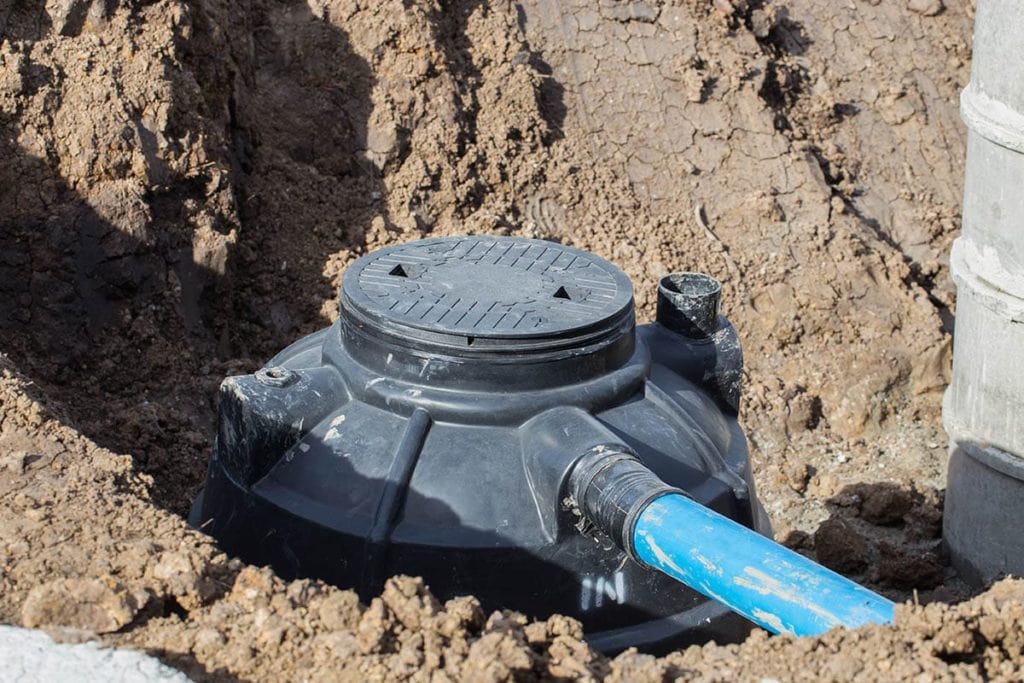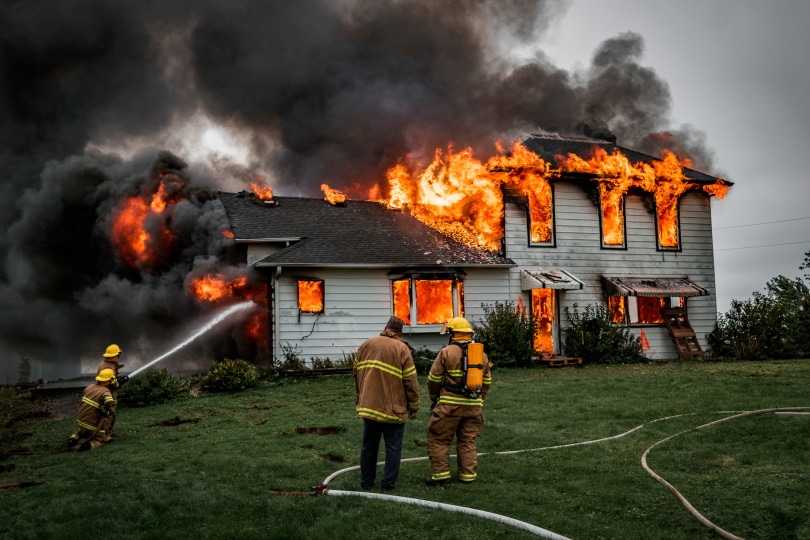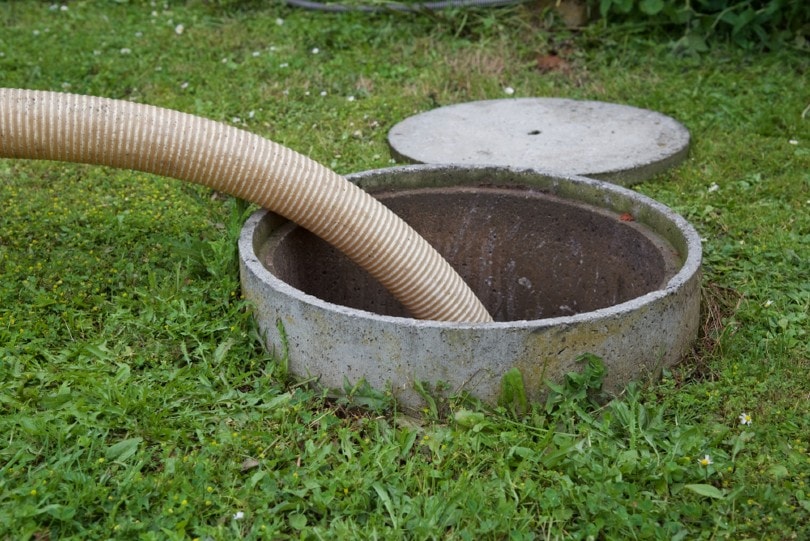Does Homeowners Insurance Cover Septic Tanks? Tips, Facts, & FAQ
-
Pete Ortiz
- Last updated:

Owning a septic tank is not a walk in the park. There are a range of factors that you must consider that most people, often serviced by municipal sewer lines, do not have to worry about. Maintenance and repair services are not only costly, but a damaged septic tank can be a health hazard.
While the septic tank is technically outside your house, it is considered part of your home, and as such, it is covered by homeowners insurance. The policy dwelling coverage usually covers damage to a septic tank if caused by sudden and unexpected events specified by your insurance policy. They include perils such as fire, ice, and snow. However, wear and tear issues because of negligence and lack of proper maintenance practices are not covered.
If you are concerned with septic tank issues such as the cost to cover up and repair pipe damage and backups in your septic tank, this article will help ease your worry. We’ll look at instances when home insurance covers septic tanks and when damage repair is excluded from the policy. We will also look at additional septic tank coverages and maintenance tips for your septic tank to improve its lifespan.
When Does Homeowners Insurance Cover Your Septic Tank?
Fortunately, if your septic tank runs into unforeseen issues, your insurance plan might cover it, as already mentioned. But this will depend on the specific circumstances that led to its damage. It will also depend on the limit set for the septic tank coverage.
Septic tanks are covered by homeowners insurance because they fall into the category of “other structure” coverage. This is simply the part of your cover that protects structures on your property but not attached to your house. This could be a shed, gazebo, inground swimming pool, or your septic tank.
Normally, home insurance gives around 10% to 20% of the total home insurance for other structure coverage. So, if your home is insured for $500,000 in your policy, you would pay $50,000 in other structures coverage. This coverage will cater to repair costs on your septic tank or even full system replacement. However, this will depend on whether your septic tank was damaged by a peril named in your insurance cover.
Therefore, you need to review your policy to find out which specific circumstances would apply if your septic tank were damaged. If you have a named policy, the specifically covered perils will be listed. If you have an open perils policy, you can find the specific exclusions listed as well.
Also, remember that purchasing a structure’s coverage will mean that you must pay your deductible. While there are diverse types of insurance policies, standard policies will cover specific damage to the septic tank up to certain limits specified in the policy. You are liable for compensation if the damages are a result of:
- Fire – if a fire burns down any component of your septic system, repairs will be covered by your homeowners insurance policy.
- Hail, Lightning, and Windstorms – Any septic damage because of these storm types will be covered on your policy.
- Riots and Vandalism – If anyone intentionally and willingly damages your septic tank system or if it is damaged amidst civil unrest, your homeowners insurance policy is obligated to cater for the repair costs depending on the circumstances.
- Explosions – Many homeowners’ insurance policies cover damages from explosions. If the damage extends to your septic system, the insurance company will help cover repair costs or replace the septic tank if the damage is extensive.
Regularly maintaining your septic tank is crucial to improving its operability. However, disasters might strike, causing unforeseen damages. Therefore, you need to purchase enough insurance coverage to help you cover repair costs when necessary.

When Is Your Septic Tank Not Covered by Homeowners Insurance?
Unfortunately, a septic tank system can sustain damages brought on by neglect and lack of maintenance. When this happens, insurance companies do not cover repairs or replacements.
Typically, damages to septic tanks are usually caused by human errors. These include driving over the septic tank, tree roots growing around the drain pipes, or even flushing oils and grease down the drain. To avoid these issues, make sure that you conduct regular maintenance on your septic tank.
Moreover, if the damage to the septic tank is caused by perils such as government seizures, sewer backups, mudslides, floods, earthquakes, and sinkholes, the tank will not be covered by the homeowner’s insurance policy. You might have to include additional coverage using separate insurance or a rider policy.
Additional Insurance Coverage for Septic Tanks
When looking for additional insurance policies for your septic tank, remember that there are no policies solely made for septic tanks. Therefore, you can opt for a home warranty. However, before taking that extra step, consider these additional coverages to your homeowners’ policy.
Service Line Coverage
Septic tanks are made from several components such as the drainpipes, which direct sewage water from your home to the septic tank. There is also another pipe that transports wastewater from the tank to a drain field. Therefore, the service line coverage provides cover for damaged pipes and utility lines that run throughout your property. This policy also covers the tank if the pipes attached to it are broken or damaged.
This additional coverage normally costs $30 per year for a $10,000 coverage. You can also get $40 a year for $20,000 insurance coverage. In case of service line ruptures, you might have to part with about $2,500 for repair. So, despite the coverage being optional, it is wise to add it to your homeowners insurance policy
Water Backup Coverage
This type of policy normally covers damages caused by a backed-up drain or a broken sump pump. These components are often not covered by a standard homeowners insurance policy. The water backup coverage will also cover the cost of removing flood water in the basement as well as replacing any furniture that might have been damaged by a broken pipe attached to your septic tank.
If you want maximum protection in your septic tank, consider combining the other structure coverage with the service line and water backup coverage. When combined, these covers will generate enough money to pay for the damages to your septic tank, your home, and damages in your home brought on by backed-up sewage water.

Tips for Maintaining Your Septic Tank
With regular maintenance, you can prevent or at least delay potential damages to your septic tank.
- Pump and Inspect the Septic Tank Regularly: As a rule of thumb, pump and inspect your tank whenever you can. According to the Environmental Protection Agency (EPA), you should pump and inspect your septic tank every 3–5 years. Septic tank professionals recommend you do this to make sure that everything is functioning optimally.
- Never Flush Non-Biodegradable Debris: Most people cannot resist the temptation of flushing all manner of things down the toilet. If you have a septic tank system, this debris will end up in the tank. The debris would include non-biodegradable objects such as cooking oil, chemicals, and paints, among others. When they drain into the septic tank, they will build up, causing the tank to fill up faster than expected.
- Properly Dispose of Waste Products: The only things that should be flushed down a toilet drain are toilet paper and human excrement. Anything else could end up clogging the septic tank pipes. Therefore, non-biodegradable objects and nylon papers should be deposited in a trash can and dumped at the landfill
- Conserve Water: Wastewater from your sink, bathtub, and toilet is usually treated in a septic tank before it is directed to the drain field. So, when you limit the amount of water you flush down your drain, you will give the tank ample time to treat the wastewater. This will prevent the septic tank from working on overdrive, thus increasing its lifespan.
- Minimize the Use of Heavy-Duty Cleaners: Heavy cleaners usually have chemical properties that tend to kill the bacteria in the septic tank. The beneficial bacteria help break down large solid molecules during water treatment, so you don’t want to kill them.
- Plant Trees Far From Your Septic Tank: When choosing the location to build your septic tank, ensure that it is built at least 100 feet away from any trees. This is because trees often damage the septic tank pipes.
Conclusion
In case you have been wondering whether a septic tank is covered by homeowners’ insurance, the answer is yes. Septic tanks are considered part of your property. However, this will hugely depend on what caused the initial damage to your septic tank.
Most insurance policies provide cover for septic tank damage if caused by named perils. These include fire, vandalism, lightning, wind, and hailstorms. However, some insurance companies will deny a liability claim if the septic tank is damaged due to poor maintenance and negligence. If you want robust coverage that is enough to cater for repair and replacement, consider combining the service line, water backup, and other structure coverage.
However, before you make a purchase, ensure that you find one that suits your needs and budget. On average, a standard homeowners insurance policy will cost you about $175 per month. But the actual price may vary depending on the number of structures built on your property.
Featured Image Credit: Phattara Away, Shutterstock
Contents


